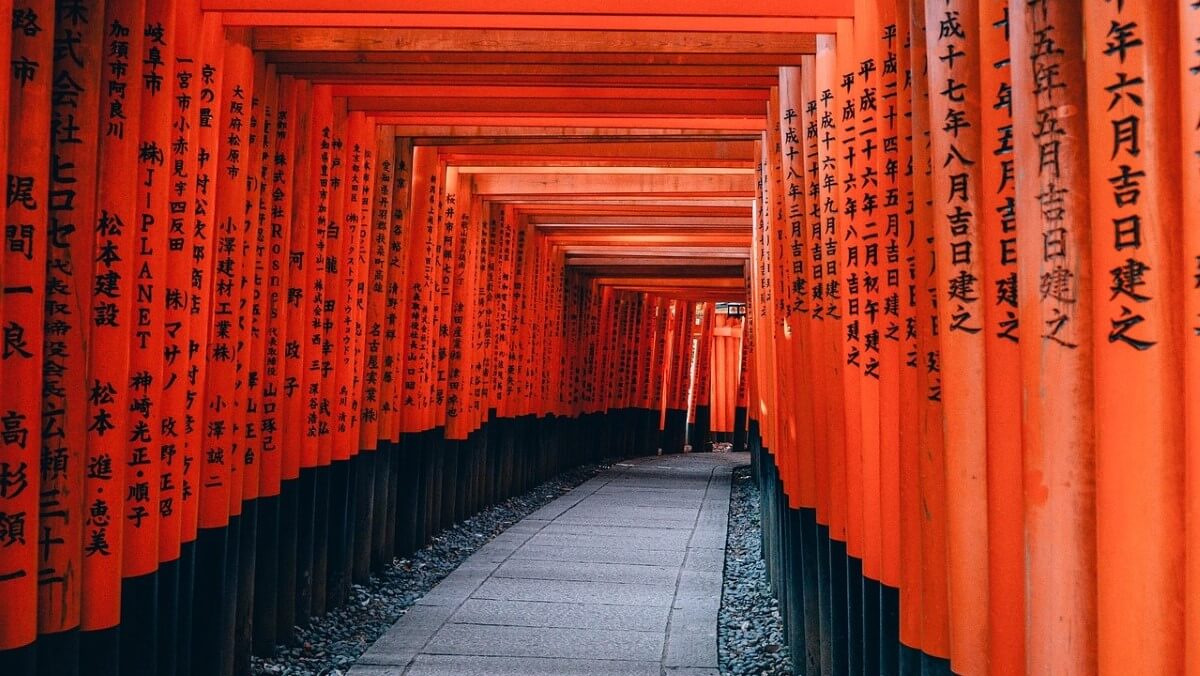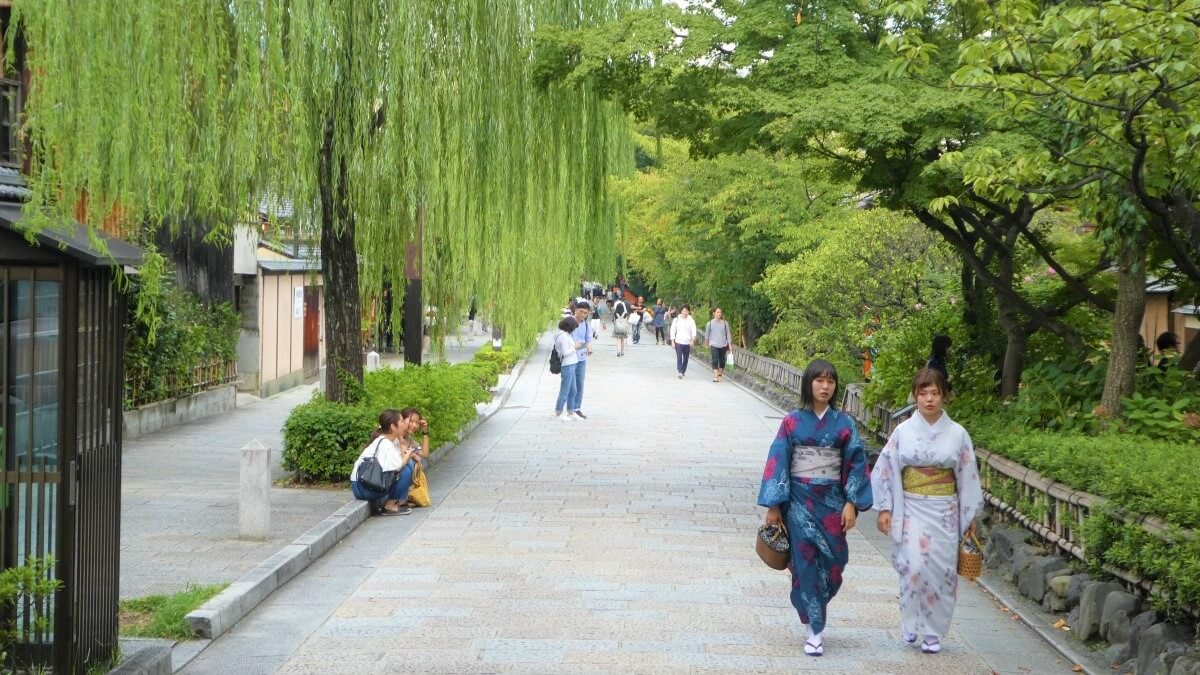Kyoto is Japan’s cultural city. As such, it was the country’s capital for more than 1,000 years. In total, you will find more than 2,000 temples and shrines here. So it is a true paradise for history and culture lovers. Did you know that during World War II, the Americans never considered dropping an atomic bomb on Kyoto? That’s how sacred this city is in Japan. And many also consider it as one of the most enjoyable cities in the country!
Are you planning a visit to Kyoto? In this travel guide, I’ll take you through the city’s best sights, discover the best accommodation and learn more about the special culture and history of Japan’s ancient capital. A history-rich visit to Kyoto starts here…
This Travel Guide to Kyoto contains affiliate links. This means that if you make a booking through one of the links on this website, Travel4history gets a small compensation for it. This does not cost you anything extra by the way!
In this Travel Guide to Kyoto
- Practical Information
- Best travel time?
- How many days?
- Discovering History in Kyoto?
Plan your trip to Kyoto & Japan
- Accommodation: Hotel or Hostel?
- Activities: Tickets & Tours, including a 45-minute Tea Ceremony Experience
- Transport by Air? Flight Tickets
- Own Transport?: Rent a Car
- Train tickets: Japan Railway Pass – 7, 14 or 21 days?

Practical information
Best travel time? The best travel time to visit Kyoto is from May to October. The temperature will be more than 20 degrees. In July and August, the temperature will be around 30 degrees. These months also have relatively the most rainfall. From December to February, the temperature ranges between 5 and 10 degrees.
How many days? You could easily spend a whole week in Kyoto. And even then you haven’t seen everything. Therefore, plan at least 3 days to visit some impressive temples in and around the city. You can also make a day trip from Kyoto to cities such as Nagoya, Nara and Osaka.
Discovering history in Kyoto?
The history of the city of Kyoto dates back to the eighth century AD. It was the Emperor Kanmu at the time who decided to move the capital from Nara to a newly built settlement, today’s Kyoto. The reason for the move was that the Buddhist priests were becoming too powerful and that could lead to instability. The new place, which came to be called Heian-Kyo would become the capital of the country for over a thousand years. Heian-Kyo, by the way, means capital of peace.
Despite its central location, Kyoto suffered little from internal strife between the various landlords. Although in 1602 the Tokugawa family seized power and chose Edo, present-day Tokyo as their power base, Kyoto remained the country’s capital. This changed when Emperor Meiji moved to the Imperial Palace in Tokyo in 1868.
During World War II, the Americans considered dropping an atomic bomb on the city. They thought it wiser not to do so because of the important cultural and historical value Kyoto represented in Japan. Kyoto was dropped and replaced by Nagasaki. Despite this, bombing raids were carried out on the city, but the damage was still fairly limited.

Sightseeing – What to do in Kyoto?
Wait a minute, did I say 2000 temples and shrines? Indeed I did! If you would like to visit all these places you would be busy for months (years?). But try to plan at least 3 full days for this fascinating city, which by the way is totally different from Tokyo: few high-rise buildings and less chaotic than the modern capital. It was not without a reason that it was founded in 794 under the name Heian-kyo, which means the capital of peace and tranquility. Below are a number of sights that you should definitely not miss during a visit.
Fushimi Inari-Taisha:
The photo at the beginning of this article is from this shrine. It is located in the south of the city and is characterized by the approximately one thousand gates (torii) that you walk through. It is one of the best visited attractions in the city and on top of the mountain you have a beautiful view of the surroundings.
Kinkaku-ji
This golden pavilion was built in the 14th century by the then landlord (shogun) of Kyoto, Yoshimitsu (1358-1408). He decided to resign his duties as landlord at the age of 37 and became a monk. This building was his home and is now one of the city’s main attractions. And don’t forget to take beautiful pictures of this magnificent shrine.
Nijo-Jo
This castle was built by Shogun Tokugawa Ieyasu (1543-1616) and is on the UNESCO World Heritage list. It is located in the middle of the city and is known for its beautiful interior and special nightingale floors. When entering these floors, you hear bird-like squeaking sounds, where intruders could easily be caught in the act back then.
Gion district
Located east of the Kamo River, this district is the place to spot geishas. A geisha is a lady in traditional dress who entertains her guests and serves them (with tea) in the proper sense of the word. Definitely a must during your stay in Kyoto.
Of course there are many more historical sites to be found in Kyoto. Soon an article will appear here with even more information about the attractions of this cultural city.

Accommodation – Where to stay in Kyoto?
The nicest district in Kyoto is of course Gion. Therefore, isn’t it a good idea to stay in the historic neighborhood of the geishas? This district can be reached by subway from Kyoto Station with a change at Karasuma-oike. Gion is located at the Sanjo stop.
Looking for accommodation in Kyoto? Look here for the options

Transportation – How to get to Kyoto?
The best way to reach Kyoto is by train. It doesn’t have its own airport, but within 50 minutes by train you’ll be at Osaka International Airport. From Tokyo it takes about 3 hours by bullet train, the Shinkansen to reach this cultural city. The main station of the city is Kyoto Station. From here you can take the subway and explore the city. Or you can take a walk and explore the center north of the station.
Next destination in Japan?
Kyoto is centrally located in Japan. To the east, head to cities like Nagoya, Nagano or Tokyo. To the south you go to the ancient capital Nara and to the west to cities like Osaka, Himeji and Hiroshima. So plenty of choice!
Do you have any tips, ideas or comments about Kyoto in Japan? Then feel free to leave a message below.